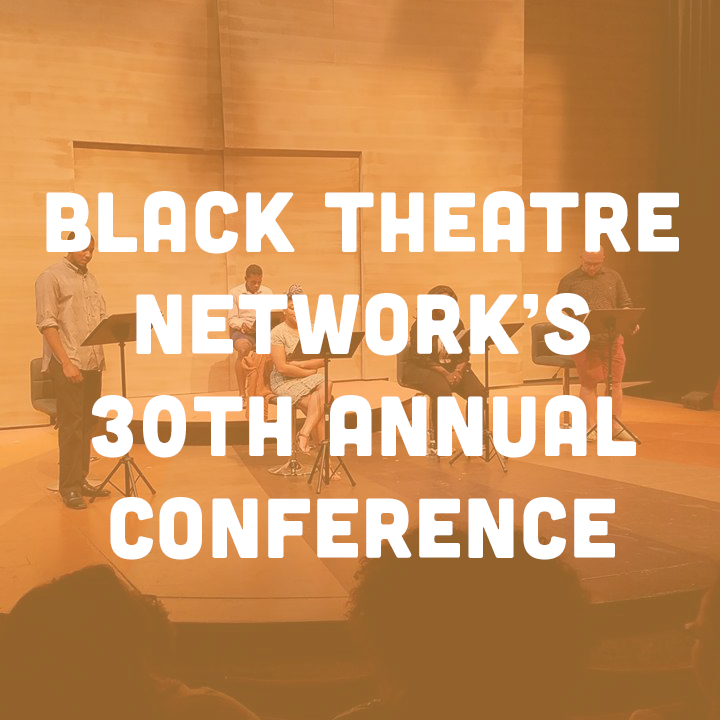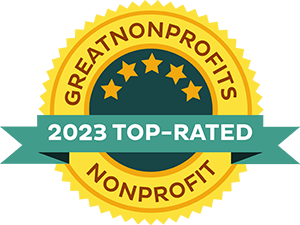by Donzell Lewis

This summer I was fortunate to attend and participate in the Black Theatre Network’s Annual Conference that took place in Chicago, Illinois. As an artist and an educator attending this conference was both a personal and professional goal for myself. I’m so excited to say that the conference was truly the highlight of my summer. It not only rejuvenated my spirit but also gave me a kick-start of preparation for this upcoming 2016-2017 school year!
The Black Theatre Network is a collective of artists, educators, students, and other professionals in pursuit of advancing the dramatic works of the African-Diaspora. I first joined the BTN when I was a graduate student and since joining I’ve made it a goal to stay connected to the network because as an artist-educator of color, although I teach diverse works, it is important that I respect the ancestry of the black artists that have come before me. I believe it is important that even in the pursuit of inclusivity we continue to give space to highlight and emphasize the voices that have been marginalized for many years.
This year’s conference was a whirlwind of a trip! I attended many seminars, I became a last minute replacement to participate in a staged reading, I devoured deep-dish pizza, and I was even a selected speaker on a panel about the importance of teaching artists within the classroom and community. Let’s dive into to but a snippet of the awesomeness of this trip.

Sunday at 3pm I checked into my hotel, and by 5pm I was sitting second row staring in awe at legendary black feminist playwright Ntozake Shange. Anyone who follows the history of poetic theatre, hip-hop theatre, black theatre, or feminist theatre should be well aware of the gravitas of Shange’s seminal work For Colored Girls who have Considered Suicide when the Rainbow is Enuf. For Colored Girl was the first time that Broadway was enraptured by an all colored female cast some 40 years before Danai Gurira’s “Eclipsed” came along and carried that torch forward.

Shange’s revelatory process of mixing performance with poetry, drama, music, and dance is what she came to call a choreo-poem. Personally, I believe that Shange’s aesthetic helped to set the precedent for both hip-hop and black feminist theatre. At start of the conference Ntozake Shange presented some of her new work, and naturally, it was both inspiring and informative. Listening to Shange recite new choreo-poetry drove thousands of questions into my head regarding the use of non-linear theatre and it’s existence in the classroom today. Reflective of the original choreo-poem, For Colored Girls, Shange’s new work was an exploration of tons of dramatic poetry strung together to not give the audience resolution to a story arc but instead to give the audience revelation into a woman’s life. Shange has a special talent to weave personal experience, cultural history, and feminism into her poetry that embraces both artistic expression along with academic strength.

Listening to Ntozake Shange reminded me that we as artists have to continue to write our lived daily experiences, and trials and tribulations in many different mediums. I say this because before Shange, the idea of a “choreo-poem” had not existed. I question, would For Colored Girls ever had become a reality if Shange forced herself to write in the traditional structure of the well-made play? Shange, similar to many other great artists who have come before her, chose to ignore the rules and instead created and defined a new model of poetic theatre. Isn’t that how we as artists help to advance our craft? Isn’t it a duty of ours as artists and teachers to both teach the rules but also inspire our students to (sometimes) throw the rules away and simply have the courage to create something new?
Another highlight of the conference, something that I think is pertinent to today’s artistic landscape and classroom environment, which is the hot topic of “color-blind” or “color-conscious” casting. First, let’s be clear, this is a hot topic, but it most certainly is not a new topic. This topic has been floating around since the first colored person stepped foot into a mostly white audition. For so many years people of color have questioned, “where am I in this play beyond that of a service worker”? The topic is back to the forefront of our discussions because of last years “#OscarsSoWhite” controversy that was then shattered by the success of a very colorful 2016 Tony Awards led by the success of Hamilton: The Musical. Diversity and color conscious casting is the heat of every day discussions. However, this topic should not just be limited to the professional sector because as a teacher, this too is important for the public school system.
As a teacher in Los Angeles, most of us teach in very multi-colored, multi-able and (sometimes) multi-gendered classrooms. Therefore, considering the work of Lin-Manuel Miranda’s Hamilton, I question how we as teachers find the space to tell stories of cultural specificity as well as stories of American legacy? Oftentimes, the early stories of American construction are told as if only white men and women were the heroes and architects of our land. Artists of color began to tell their own stories of the other heroes of our nation: the men, women, and LGTBTQ people that are often overlooked. With Hamilton, Lin-Manuel Miranda has found a way to tell an all white origin story through the use of a very multi-colored cast.
Miranda managed to strike the perfect, yet challenging, balance. How could he (1) include the untold stories of people of color into this mostly white origin story? (2) How does he find space to employ actors of color to accurately portray these white heroes? (3) How does he then prevent from alienating audiences? Clearly, I cannot answer how Miranda solved the problems he solved but we all see the evidence with the indisputable brilliance of Hamilton: The Musical.
It is important that arts teachers look at their classrooms and say, “how can I make this a color-conscious lesson instead of a color-blind lesson”. The difference between the two is simply recognition! Color-blind is refusing to accept and recognize the diversity that lies in front of you. Color-blind casting is a false precept that alludes to the idea that a person’s color has nothing to do with the affectation they can bring to a role. As opposed to color-conscious casting which specifically embraces a person’s color or difference because we acknowledge that it brings a new layer to the role, play, or production.
I find the power of color conscious casting to be more inclusive and more effective than color-blind casting. Now, clearly, color conscious casting cannot be done for all plays, stories and races. You cannot have a white production of August Wilson’s “The Piano Lesson”. The reasons being are grounds for another blog post or coffee conversation. However, the point I want to state is that as a teacher there are ways to embrace the multiplicities of our classroom diversity as opposed to ignore it. Let us be color-conscious and use the diversity as a positive instead of as a challenge. There are ways to both give space to recognize the cultural diaspora of our students and equally include them into lessons that are not located in their cultural ancestry. It’s definitely challenging but it’s not impossible. If it were impossible, then there would be no Hamilton!

This conference inspired me, and I am looking forward to this upcoming school year and finding ways to teach the rules and also give space for students to (sometimes) throw the rules away. I look forward to honoring the cultural ancestry of my students while also adding them into the stories they are often erased from. This year will be especially challenging because I’m going to push myself to grow as a teacher while also challenging my students to do the same. But that’s why we have our P.S. ARTS theme, ‘The Courage to Create,’ to encourage us in times of difficulty to have the strength to keep going and create despite whatever changes we must face. So, let’s go create everyone!






